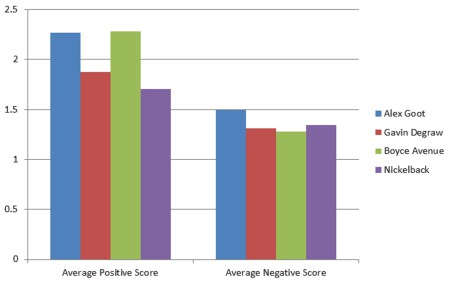
Neil Basu
“YouTube is popular.” There it is, folks. The safest sentence I have written on this blog. With 60 hours of content uploaded every minute and 4 billion page views every day, the pre-eminent video sharing site has found monumental success. But since 2007, what can be less confidently asserted is that YouTube is a champion of user-generated content, a bastion of hope for the layman with a camera or video file.
Of course, a statement like this was tautological when YouTube was created. The only content on YouTube was of the user-generated variety, and so the site fostered the impression that user-generated content was king. But when corporations began to take notice of the video-uploading sensation, they thought two things. First, that YouTube was a threat to their revenues. Second, that YouTube was a new market of opportunity. For both reasons, they began to upload their own, professionally produced content to the site. And since then, a growing body of academics (Kim 2012, for instance) believe that the entrance of corporate, professional content will change the YouTube community’s perception of the amateurs, eventually crowding them out completely.
A doomsday notion, for sure, but certainly one that is testable!
Particularly in the category of music videos. While rock and pop stars have started to funnel videos through YouTube using corporate usernames, amateur musicians have been uploading their work from the beginning. Some of these are called ‘YouTube artists’ based on impressive fan bases, high quality content, and frequent new additions. For me, these ‘YouTube artists’ seemed ripe for a comparison with billboard artists who have signed onto a record label and are thus funded by traditional media.
I decided to look into whether YouTube users respond more or less favorably to the videos of YouTube artists or billboard artists. To judge favorability, I developed a program to collect the comment threads of four videos (2 by YouTube artists, 2 by billboard artists) and used a sentiment analysis technique (SentiStrength, created by Thelwall et. al. 2010) to score each individual comment. I culled the feed to the most recent 300 comments for each video in order to create a manageable amount of data.
Why didn’t I simply use likes and dislikes? Because with that measure, there were only two sides to favorability; I wanted a more granular scale to bring out the various shades of the variable. I also didn’t trust YouTube users enough to know they weren’t simply ‘going with the crowd’ in liking or disliking a video. A comment, however, was a conscious choice to single oneself out (however anonymously) and express something publicly and so was a more reliable indicator of how one actually felt about the video.
The four videos chosen were Alex Goot’s “Sensitivity” (link), Boyce Avenue’s “Find Me” (link), Gavin Degraw’s “Chariot” (link), and Nickelback’s “Leader of Men” (link). Spare me comments about my personal music tastes – these videos were selected simply because they all had view counts within 370,000 of each other, a reasonable equalizer for view counts over 3 million at the time I did this study. The former two were products of YouTube artists, while the latter two were products of billboard artists. To control for genre, both Alex Goot’s video and Gavin Degraw’s video were classified as pop, and both Boyce Avenue’s video and Nickelback’s video were classified as rock.
As you might have guessed from the title of this post, I found that when genre was controlled for, the YouTube artist’s video had significantly more favorable ratings in the comments feed than the billboard artist’s video had. SentiStrength calculated both a positive and a negative score for each comment (scaled from 1 to 5 and -1 to -5 respectively). The comparison amongst the average positive and average negative ratings for a comment on each video can be found below:

While the difference in average positive ratings of a comment between the two YouTube artists’ videos was not statistically significant, every other comparison amongst the four numbers was. Clearly, the results offered evidence that YouTube artists’ content were not only still appreciated; they may actually be appreciated more so than billboard artists’ content.
Of course, as displayed, Alex Goot’s video was also the most unfavorably received on average based on the comments feed. This was the only statistically significant finding based on the average negative sentiment scores. So Alex Goot’s video seemed to be the most polarizing video, with the second highest average positive score and the highest average negative score. Is this evidence that some YouTube artists are already becoming less appreciated and that user-generated content is doomed?
Most likely not. There were numerous alternative explanations for why Alex Goot’s video received the highest average negative score per comment. For instance, SentiStrength could be blamed for its acknowledged weakness in scoring negative emotions accurately. In addition, a single argument in Alex Goot’s comment thread could be blamed for its ability to compound disapproval and unnaturally bring down the average negativity score of a comment thread; none of the other videos displayed an argument in their most recent 300 comments. Either way, “Sensitivity” did not seem to have been scored the most unfavorably based on Alex Goot’s status as a ‘YouTube artist.’
What remains is the reassurance that the ethos of YouTube as a promoter of user-generated content is not unfounded (at least for music videos!). This does not mean, however, that YouTube artists produce videos that parallel corporate, professional content in terms of quality. There are more qualities of a video and an artist that users take into account when they are reacting favorably or unfavorably. One such quality that might make up for a difference in quality would be the level of personal relationship an audience feels like it has with a YouTube artist; users frequently appeal to YouTube artists directly, requesting particular covers of songs. No such relationship is evidenced in the comments section of billboard artists’ content.
It is worth ending on a note of caution: what happens if this personal relationship with a YouTube artist dissolves? Billboard artists are clearly separated from YouTube users as a distinct group, and YouTube artists are already delineated from the rest of the YouTube community by virtue of their popularity. If that delineation becomes too palpable in future and there is no line of communication between these lead users and the rest, then YouTube artists might well become classified as professionals, and their content, too. User-generated content would then again be called into question. It will be interesting to see whether this scenario can be avoided, or if people like Kim (2012) are simply predicting a future that hasn’t happened yet.